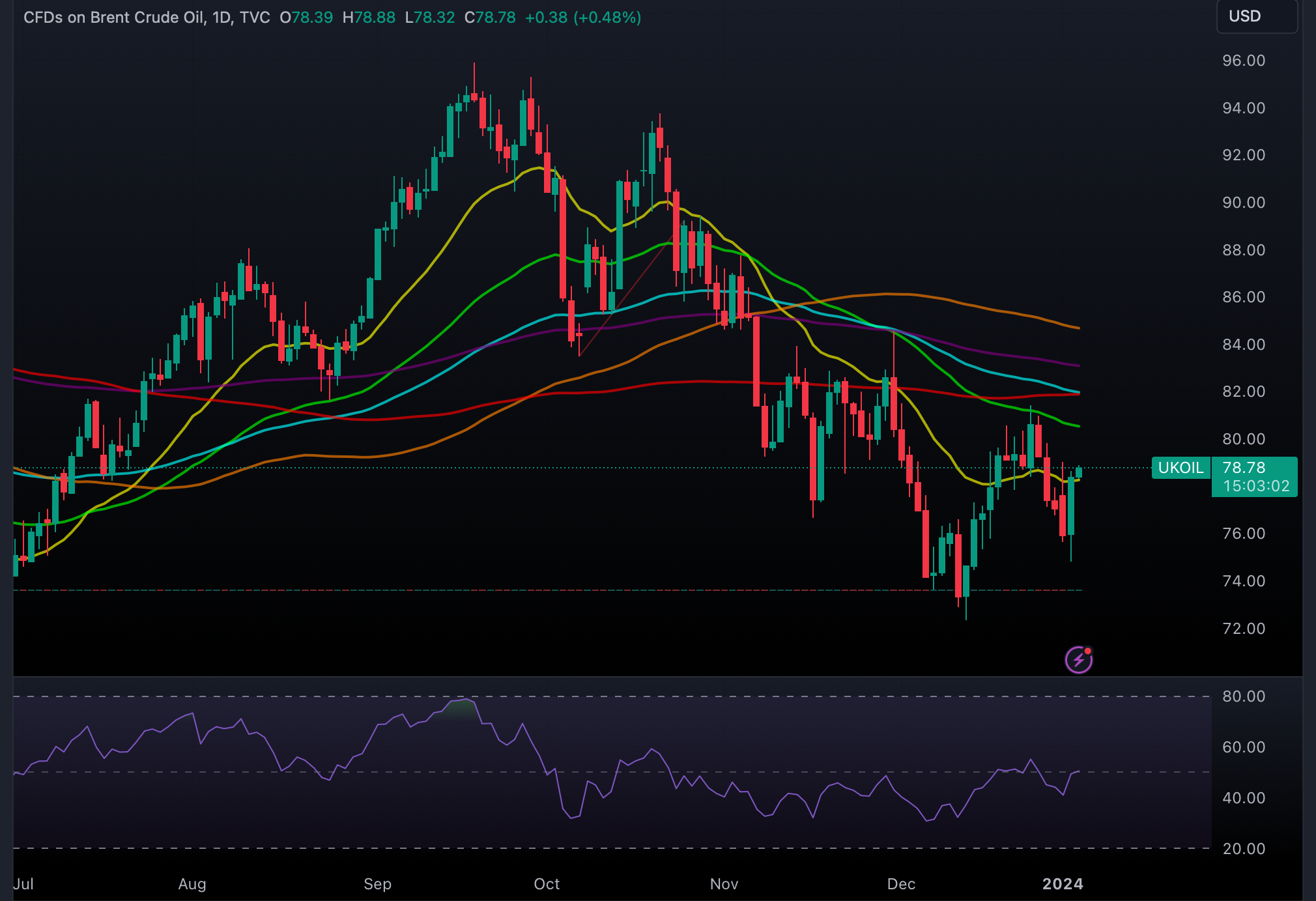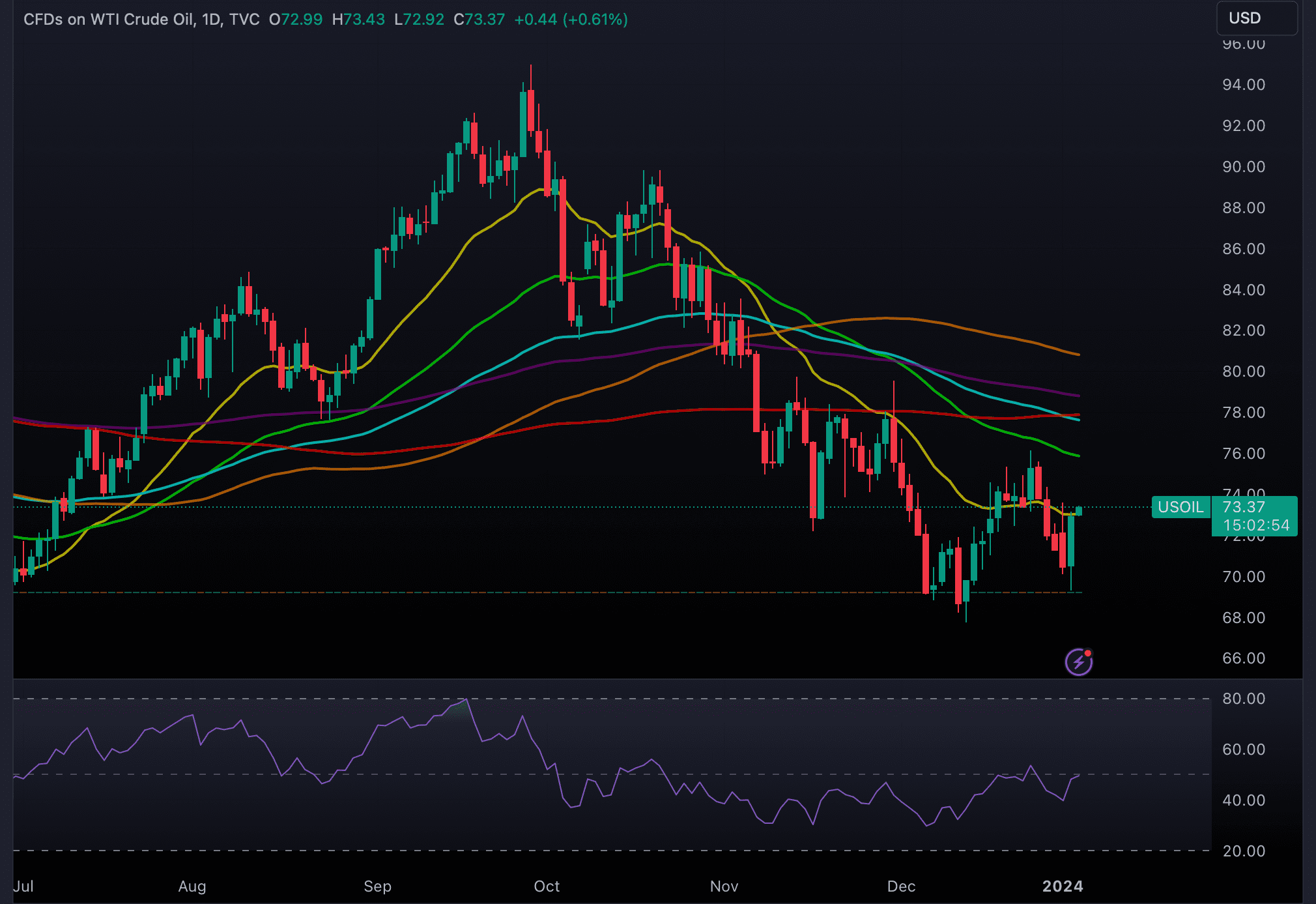International oil prices continued their upward trajectory on Thursday, building on gains from the previous session, as supply concerns intensified due to disruptions at a key field in Libya and escalating tensions surrounding the Israel-Gaza conflict.
Brent crude, a benchmark for global oil prices, is currently trading at $78.61 per barrel, marking a 0.47% gain for the day. West Texas Intermediate crude (WTI) is trading at $73.34 per barrel, reflecting a 0.49% increase from the previous close.


THE TURNAROUND
The commodity broke a four-day losing streak by surging over 3% in the previous session, achieving the highest daily percentage gain since mid-November. The market responded to growing fears of potential supply disruptions.
“A confluence of headlines around further tensions in the Red Sea and a full shutdown of Libya’s Sharara oilfield from local protests have renewed concerns about global oil supply disruptions,” noted Yeap Jun Rong, a market strategist at IG, as reported by Reuters.
Capable of producing up to 300,000 barrels per day, the Sharara oilfield was forced to completely shut down due to protests in Libya. This field puts more strain on the dynamics of the world’s oil supply because it is a common target of local and national political protests.
Red Sea shipping problems have arisen in response to allegations made by Yemen’s Houthis, who are backed by Iran, that they had “targeted” a container ship that was headed for Israel, adding to supply worries. The group had fired two anti-ship ballistic missiles in the southern Red Sea the day before, according to a report from the U.S. Central Command.
The U.S. oil stockpiles fell by 7.4 million barrels during the week ending December 29, according to the American Petroleum Institute, supporting the market’s sentiment.
In the meantime, the Organisation of the Petroleum Exporting Countries (OPEC) declared that, in spite of Angola’s decision to quit the group last month, communication and collaboration would continue within the larger OPEC+ producer alliance. The group has called a meeting for February 1st to discuss the execution of its most recent reduction in oil output.
With future anticipation, analysts at Goldman Sachs predict a Brent crude price range between $70 and $90 a barrel in 2024, based on flexible OPEC+ supply, a low risk of recession, and strategic petroleum reserve purchases by China and the U.S. The analysts highlighted geopolitical risk scenarios as a key upside risk to this forecast in a January 03 client note.














